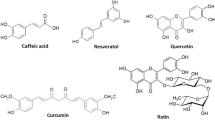Abstract
The main purpose of this study was to investigate the effect of free radicals and experimental diabetes on cytosolic creatine kinase activity in rat heart, muscle and brain. Hydrogen peroxide decreased creatine kinase activity in a dose dependent manner which was reversed by catalase. Xanthine/xanthine oxidase, which produces superoxide anion, lowered the creatine kinase activity in the same manner whose effect was protected by superoxide dismutase. N-acetylcysteine and dithiothreitol also significantly ameliorated the effect of Xanthine/xanthine oxidase and hydrogen peroxide. Experimental diabetes of twenty-one days (induced by alloxan), also caused a similar decrease in the activity of creatine kinase. This led us to the conclusion that the decrease in creatine kinase activity during diabetes could be due to the production of reactive oxygen species. The free radical effect could be on the sulfhydryl groups of the enzyme at the active sites, since addition of sulfhydryl groups like N-acetylcysteine and dithiothreitol showed a significant reversal effect.
Similar content being viewed by others
References
Bessman SP, Geiger PJ: The phosphoryl creatine shuttle. Science 211: 448–452, 1981
Wallimann T, Schlosser T, Eppenberger HM: Function of M-line bound CK as intramyofibrillar ATP regenerator at the receiving end of the phosphoryl creatine shuttle in muscle. J Biol Chem 259: 5224–5238, 1984
Yagi K, Mase R: Coupled reaction of creatine kinase and myosin ATPase. J Biol Chem 237: 397–403, 1962
Savabi F, Gieger PJ, Bessman SP: Kinetic properties and functional role of creatine phosphokinase in glycerinated muscle fibers, further evidence for compartmentation. Biochem Biophys Res Commun 114: 785–790, 1993
Wallimann T, Wyss M, Bridzka D, Nicolay K, Eppenberger HM: Intracellular compartmentation, structure and function of creatine kinase isoenzymes in tissues with high and fluctuating energy demands: The ‘Phosphocreatine circuit’ for cellular energy homeostasis. Biochem J 81: 21–40, 1992
Kaldis P, Wallimann T: Functional differences between dimeric and octameric mitochondrial creatine kinase. Biochem J 388: 623–627, 1995
Przyklenk K, Whittaker P, Kloner RA: In vivo infusion of oxygen free radicals. Am Heart J 119: 807–815, 1990
Wei Z, Benjamin HSL: Garlic inhibits free radical generation and augments antioxidant enzyme activity in vascular endothelial cells. Nutr Res 18: 61–70, 1998
Oberley LW: Free radicals and diabetes. Free Radic Biol Med 5: 113–124, 1988
Crawford DW, Blankenhorn DH: Arterial wall oxygenation, oxyradicals and atherosclerosis. 89: 97–108, 1991
Kenyon GL: Creatine kinase shapes up. Nature 381: 281–282, 1996
Haghighi AZ, Maples KR: On the mechanism of the inhibition of glutamine synthetase and creatine phosphokinase by methionine sulfoxide. J Neurosci Res 43: 107–111, 1996
Konorev EA, Hogg N, Kalyanaraman B: Rapid and irreversible inhibition of creatine kinase by peroxynitrite. FEBS Lett 427: 171–174, 1998
Halliwell B, Gutteridge JMC: Lipid peroxidation, oxygen radicals, cell damage and antioxidant therapy. Lancet 1: 1396–1397, 1984
Heikila RE, Winston B, Cohen G, Barden H: Alloxan induced diabetes, evidence for hydroxyl radical as a toxic intermediate. Biochem Pharmacol 25: 1085–1092, 1976
Sochor M, Baquer NZ, McLean P: Glucose over and under utilization in diabetes: Comparative studies on the change in activities of enzymes of glucose metabolism in rat kidney and liver. Mol Physiol 7: 51–68.
Forster G, Bernt E, Bergmeyer HU: In HU Bergmeyer (ed.) Methods in Enzymology. vol. II. Academic Press, New York, 1974, pp 784–793
Scherer NM, Deamer DW: Oxidative stress impairs the function of sarcoplasmic reticulum by oxidation of sulfhydryl groups in the Ca2+ ATPase. Arch Biochem 246: 589–610, 1986
Lowry H, Rosenbrough NJ, Farr AL, Randall RJ: Protein measurement with the Folin phenol reagent. J Biol Chem 193: 265–275, 1951
Genet S, Kale RK, Baquer NZ: Effect of vanadate, insulin and fenugreek (Trigonella foenum graecum) on creatine kinase levels in tissues of diabetic rat. Ind J Exp Biol 37: 200–202, 1999
Zhang Y, Marcillar O, Giulivic C, Ernster L, Davies KJA: The oxidative inactivation of mitochondrial transport chain components and ATPase. J Biol Chem 265: 16330–16336, 1990
Liu P, Hock CE, Nagele R, Wong PY: Formation of nitricoxide, superoxide and peroxynitrite in myocardial ischemia-reperfusion injury in rats. Am J Physiol 272(5pt2): H2327–H2336, 1997
Liu ZJ, Zhou J: Spin-labeling probe on conformational change at the active site of creatine kinase during denaturation by guanidine hydrochloride. Biochem Biophys Acta 1253: 63–68, 1995
Yatin SM, Aksenov M, Butterfield DA: The antioxidant vitamin E modulates amyloid beta-peptide induced creatine kinase activity inhibition and increased protein oxidation: Implications for the free radical hypothesis of Alzheimer's disease. Neurochem Res 24: 427–435, 1999
Ventura-Clapier R, Veksler V, Hoerter JA: Myofabrillar creatine kinase and cardiac contraction. Mol Cell Biochem 133/134: 1125–1144, 1994
Tian R, Ingwall JS: Energetic basis for reduced contractile reserve in isolated rat hearts. Am J Physiol 270: H1207–H1216, 1996
Veksler V, Ventura-Clapier R: In situ study of myofibrils, mitochondria and bound creatine kinase in experimental cardiomyopathies. Mol Cell Biochem 133/134: 287–298, 1994
Mathews RT, Yang L, Jenkins GG, Ferrants RJ, Rosen BR, Kaddurah-daouk R, Beal MF: Sustrates cause myocardial systolic but not diastolic disfunction. J Neurosci 18: 156–163, 1998
Mekhfi H, Veksler V, Mateo P, Rochette L, Ventura-Clapier R: Creatine kinase is the main target of reactive oxygen species in cardiac myofibrils. Circ Res 78: 1016–1027, 1996
Baynes, JW: Role of oxidative stress in development of complications in diabetes. Diabetes 40: 405–412, 1991
Author information
Authors and Affiliations
Rights and permissions
About this article
Cite this article
Genet, S., Kale, R. & Baquer, N. Effects of free radicals on cytosolic creatine kinase activities and protection by antioxidant enzymes and sulfhydryl compounds. Mol Cell Biochem 210, 23–28 (2000). https://doi.org/10.1023/A:1007071617480
Issue Date:
DOI: https://doi.org/10.1023/A:1007071617480




